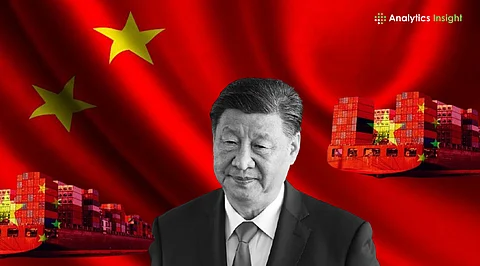China’s exports to the United States continue to demonstrate remarkable resilience despite ongoing tariffs and heightened political tensions. This ongoing strength not only emphasizes China’s significant role in global supply chains but also bolsters President Xi Jinping‘s negotiating power in international trade discussions.
Strong Export Figures Defy Tariff Impact
Over the past six months, approximately $1 billion worth of Chinese goods has been shipped to the United States each day. Data from September shows an increase in shipments compared to August, even as overall bilateral trade has declined by double digits this year. The persistence of these export levels highlights the challenges faced by US manufacturers in relocating production away from China, particularly in essential sectors like electronics, rare earths, and industrial materials.
Economists Chang Shu and David Qu of Bloomberg have pointed out that China’s pivotal position in global supply chains grants it considerable “bargaining power with US importers.” They emphasize that realigning production processes will take years, not months, revealing the complexities involved in shifting manufacturing hubs.
Political Landscape and Trade Negotiations
The sustained strength of China’s exports coincides with preparations by Xi’s government for another round of trade negotiations, which aim to extend the current 90-day tariff truce that is set to expire in November. During the third quarter of 2019, China exported over $100 billion worth of goods to the US, resulting in a bilateral trade surplus of $67 billion. This surplus plays a vital role in maintaining stability within China’s domestic economy.
Despite Donald Trump‘s threats to impose additional tariffs and his focus on rare earths, fentanyl, and soybeans as key negotiation points, analysts suggest that China’s continued dominance in certain supply chains limits the effectiveness of US trade restrictions.
Chinese firms have also adapted to the higher tariffs by employing creative strategies to maintain export levels. Some companies are routing shipments through countries such as Mexico and Vietnam, allowing importers to benefit from lower customs evaluations or to circumvent full tariff payments. According to Zhaopeng Xing, a strategist at ANZ, this practice persists, in part, due to the limited resources available to US customs authorities for monitoring every transaction.
Additionally, Chinese e-commerce exports have proven robust. Following the closure of the “de minimis” duty-free loophole in May, China has shipped $5.4 billion worth of small parcels to American consumers. B2B shipments also surged to $201 million in September, indicating that Chinese exporters are adjusting their strategies by bulk-shipping products before re-packaging them in the US.
While exports of gaming consoles and televisions have declined as major brands shift production to Southeast Asia, China’s overall exports to the US have dropped below $320 billion this year. Despite these declines, the ability to maintain a daily export figure of $1 billion underscores the limitations of US tariff power.
As negotiations continue, Beijing appears to hold significant leverage, a factor that Xi Jinping is likely to utilize strategically in upcoming discussions.






































































